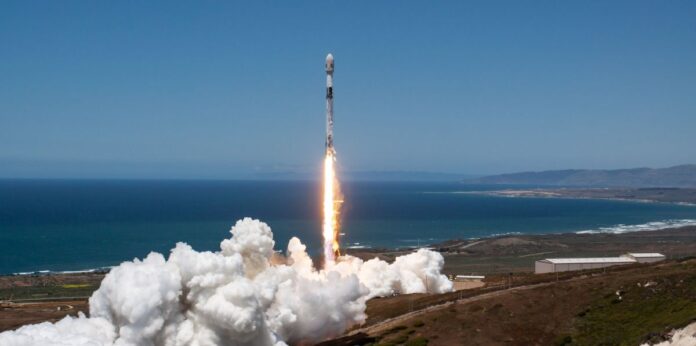SpaceX plans to launch its second mission in a span of seven hours on Friday morning (May 19), and you can watch the action live.
A Falcon 9 rocket topped with 21 satellites for the companies Iridium and OneWeb is scheduled to lift off from Vandenberg Space Force Base in California on Friday at 9:19 a.m. EDT (1319 GMT; 6:19 a.m. local California time).
Watch it live here at Space.com, courtesy of SpaceX, or directly via the company (opens in new tab). Coverage is expected to begin about 15 minutes before launch.
Related: 8 ways that SpaceX has transformed spaceflight
If all goes according to plan, the Falcon 9’s first stage will return to Earth about nine minutes after liftoff. It will touch down on the SpaceX droneship Of Course I Still Love You, which will be stationed in the Pacific Ocean.
It will be the 11th launch and landing for this particular booster, SpaceX said in a mission description (opens in new tab).
The rocket’s upper stage, meanwhile, will continue carrying the satellites — five belonging to Iridium and the other 16 to OneWeb — to low Earth orbit. They’re scheduled to be deployed over the course of about 30 minutes, beginning roughly an hour after liftoff.
Fifteen of the OneWeb satellites will further build out the company’s broadband constellation in low Earth orbit. The 16th is a technology demonstrator known as JoeySat.
“JoeySat contains several new technologies, including a digitally regenerative payload and demonstration of multi-beam electronically steered phased array antennas,” OneWeb wrote in a mission description (opens in new tab).
SpaceX has already launched three batches of OneWeb internet satellites, sending 40 spacecraft skyward on each of those previous missions.
The five Iridium satellites are spares that will provide further backup for the company’s 66 currently operational telecom satellites. (Iridium already has nine spare satellites in orbit.)
“Our constellation is incredibly healthy; however, the spare satellites have no utility to us on the ground,” Iridium CEO Matt Desch said in a statement in September 2022 (opens in new tab), when this SpaceX launch was announced.
“We built extra satellites as an insurance policy, and with SpaceX’s stellar track record, we look forward to another successful launch, which will position us even better to replicate the longevity of our first constellation,” he added.
This launch will be the second in rapid succession for SpaceX. The company also launched 22 of its own Starlink “V2 mini” internet satellites from Florida’s Space Coast on Friday at 2:19 a.m. EDT (0619 GMT).
Mike Wall is the author of “Out There (opens in new tab)” (Grand Central Publishing, 2018; illustrated by Karl Tate), a book about the search for alien life. Follow him on Twitter @michaeldwall (opens in new tab). Follow us @Spacedotcom (opens in new tab), or on Facebook (opens in new tab) and Instagram (opens in new tab).

